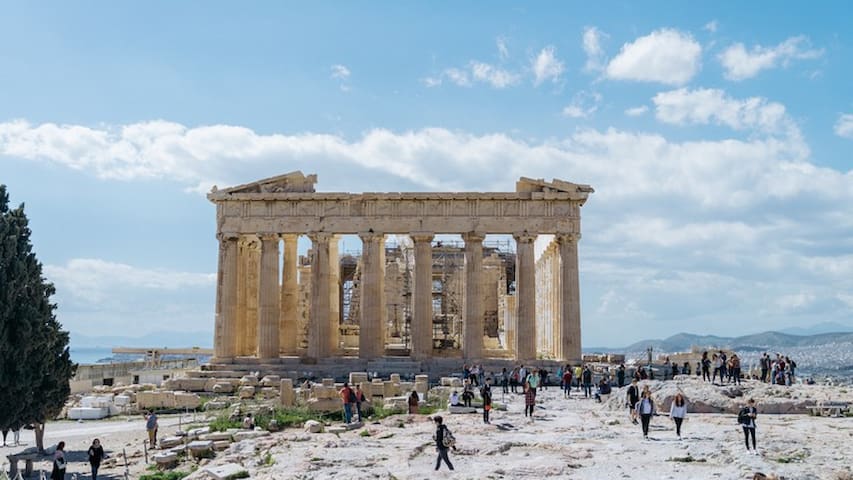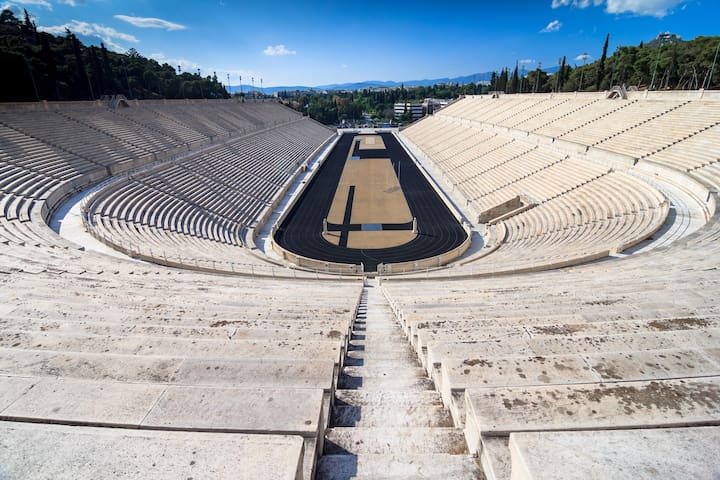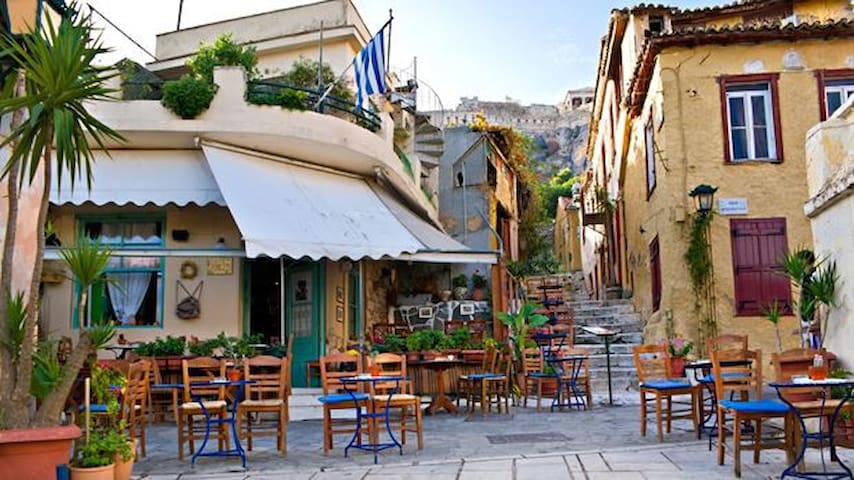Αξιοθέατα
Muzeum Akropole
15 Dionysiou Areopagitouhttps://www.theacropolismuseum.gr/en
The Acropolis of Athens is an ancient citadel located on a rocky outcrop above the city of Athens and contains the remains of several ancient buildings of great architectural and historic significance, the most famous being the Parthenon. https://en.wikipedia.org/wiki/Acropolis_of_Athens
1856 místní doporučují
Akropolis v Athénách
The Acropolis of Athens is an ancient citadel located on a rocky outcrop above the city of Athens and contains the remains of several ancient buildings of great architectural and historic significance, the most famous being the Parthenon. https://en.wikipedia.org/wiki/Acropolis_of_Athens
A stadium was built on the site of a simple racecourse by the Athenian statesman Lykourgos (Lycurgus) c. 330 BC, primarily for the Panathenaic Games. It was rebuilt in marble by Herodes Atticus, an Athenian Roman senator, by 144 AD and had a capacity of 50,000 seats. After the rise of Christianity in the 4th century it was largely abandoned. The stadium was excavated in 1869 and hosted the Zappas Olympics in 1870 and 1875. After being refurbished, it hosted the opening and closing ceremonies of the first modern Olympics in 1896 and was the venue for 4 of the 9 contested sports. It was used for various purposes in the 20th century and was once again used as an Olympic venue in 2004. It is the finishing point for the annual Athens Classic Marathon. It is also the last venue in Greece from where the Olympic flame handover ceremony to the host nation takes place. http://www.panathenaicstadium.gr/HomePage/tabid/84/language/en-US/Default.aspx
870 místní doporučují
Panathénský stadion
Leoforos Vasileos KonstantinouA stadium was built on the site of a simple racecourse by the Athenian statesman Lykourgos (Lycurgus) c. 330 BC, primarily for the Panathenaic Games. It was rebuilt in marble by Herodes Atticus, an Athenian Roman senator, by 144 AD and had a capacity of 50,000 seats. After the rise of Christianity in the 4th century it was largely abandoned. The stadium was excavated in 1869 and hosted the Zappas Olympics in 1870 and 1875. After being refurbished, it hosted the opening and closing ceremonies of the first modern Olympics in 1896 and was the venue for 4 of the 9 contested sports. It was used for various purposes in the 20th century and was once again used as an Olympic venue in 2004. It is the finishing point for the annual Athens Classic Marathon. It is also the last venue in Greece from where the Olympic flame handover ceremony to the host nation takes place. http://www.panathenaicstadium.gr/HomePage/tabid/84/language/en-US/Default.aspx
Syntagma Square (Greek: Πλατεία Συντάγματος, pronounced [plaˈtia sinˈdaɣmatos], "Constitution Square") is the central square of Athens.
553 místní doporučují
Syntagma Square
Platia SintagmatosSyntagma Square (Greek: Πλατεία Συντάγματος, pronounced [plaˈtia sinˈdaɣmatos], "Constitution Square") is the central square of Athens.
One of the most impressive streets of Athens, offering a nice view of the southern slope of the Acropolis and the Parthenon! You can find the Filopappou hill nearby. i recommend afternoon or night walk.
200 místní doporučují
Dionysiou Areopagitou
Dionysiou AreopagitouOne of the most impressive streets of Athens, offering a nice view of the southern slope of the Acropolis and the Parthenon! You can find the Filopappou hill nearby. i recommend afternoon or night walk.
National Art Gallery hosts an excellent selection of Greek paintings.
122 místní doporučují
National Gallery
50 MichalakopoulouNational Art Gallery hosts an excellent selection of Greek paintings.
Γειτονιές
Anafiotika (Greek: Αναφιώτικα pronounced [a.naˈfço.ti.ka]) is a scenic tiny neighborhood of Athens, part of the old historical neighborhood called Plaka. It lies in northerneast side of the Acropolis hill. The first houses were built in the era of Otto of Greece, when workers from the island of Anafi came to Athens in order to work as construction workers in the refurbishment of King Othon's Palace.[1] The first two inhabitants were listed as G. Damigos, carpenter, and M. Sigalas, construction worker. Soon, workers from other Cycladic islands also started to arrive there, to work as carpenters or even stone and marble workers, in a further building reconstruction period in Athens, but also in the following era after the end of the reign of King Otto.
323 místní doporučují
Anafiotika
Anafiotika (Greek: Αναφιώτικα pronounced [a.naˈfço.ti.ka]) is a scenic tiny neighborhood of Athens, part of the old historical neighborhood called Plaka. It lies in northerneast side of the Acropolis hill. The first houses were built in the era of Otto of Greece, when workers from the island of Anafi came to Athens in order to work as construction workers in the refurbishment of King Othon's Palace.[1] The first two inhabitants were listed as G. Damigos, carpenter, and M. Sigalas, construction worker. Soon, workers from other Cycladic islands also started to arrive there, to work as carpenters or even stone and marble workers, in a further building reconstruction period in Athens, but also in the following era after the end of the reign of King Otto.





